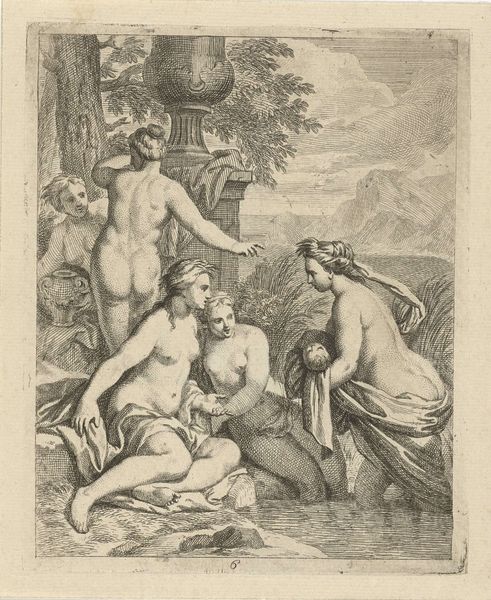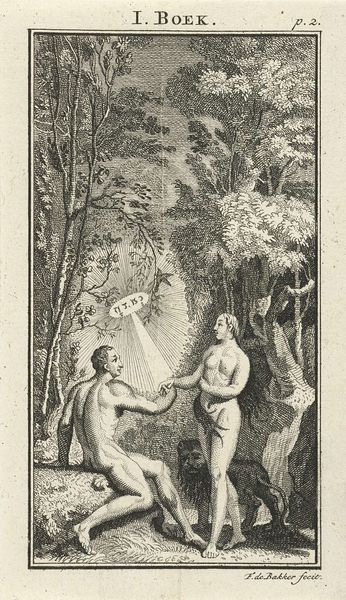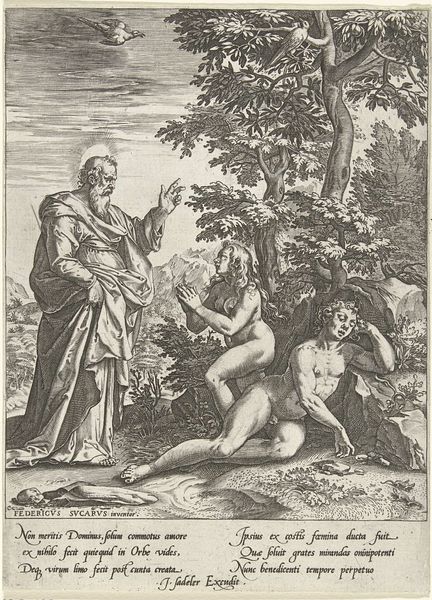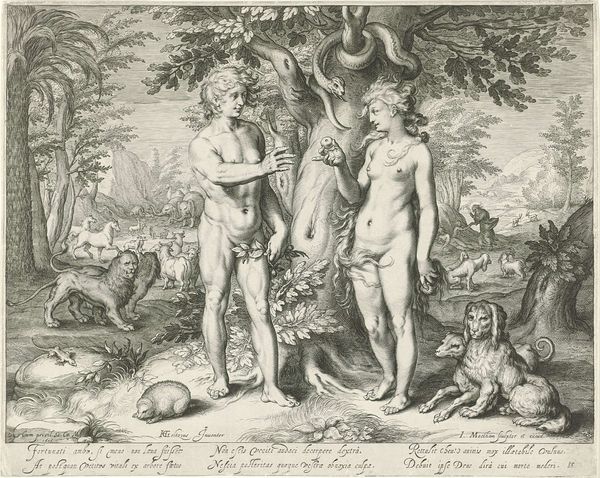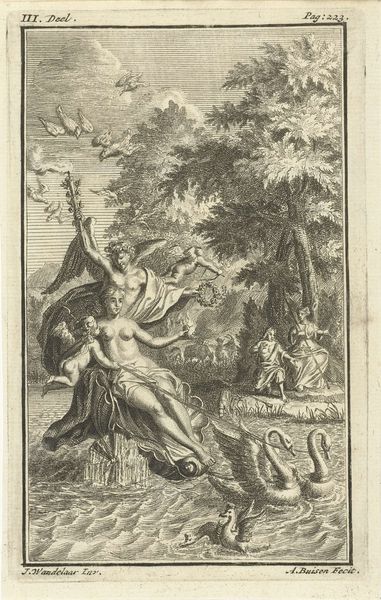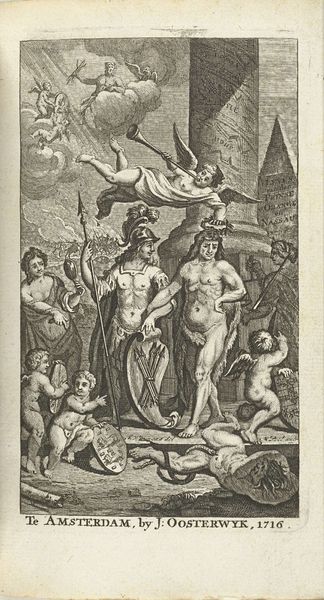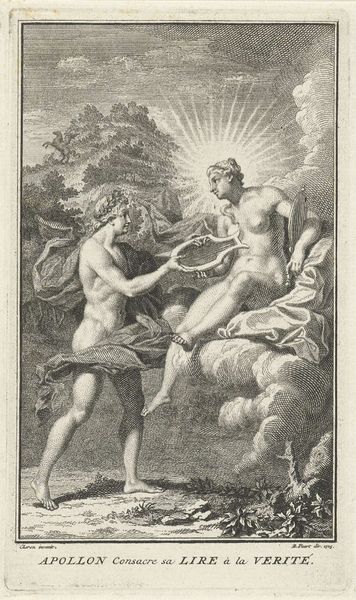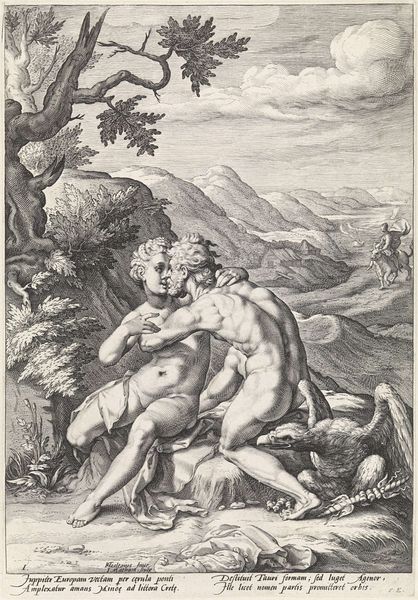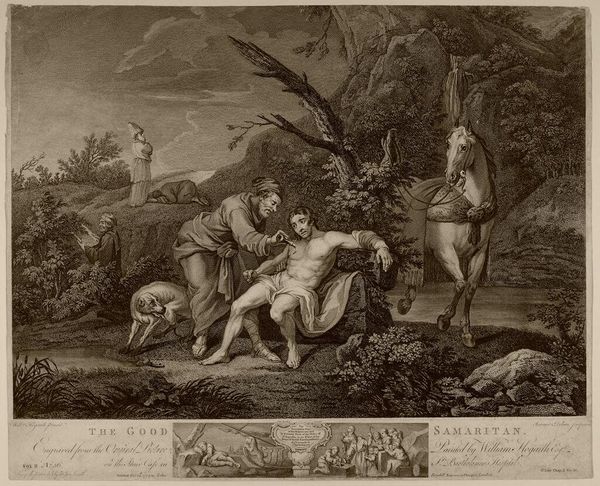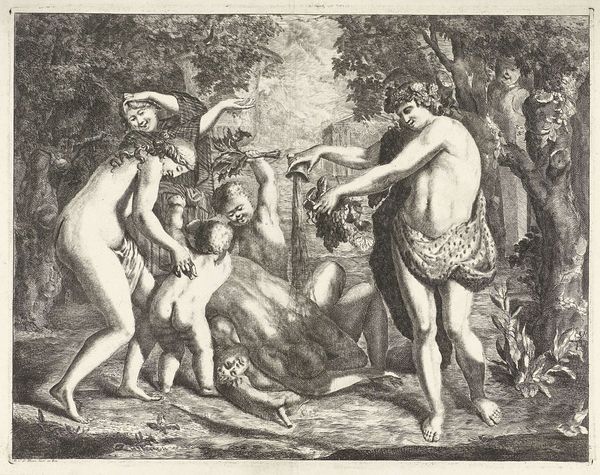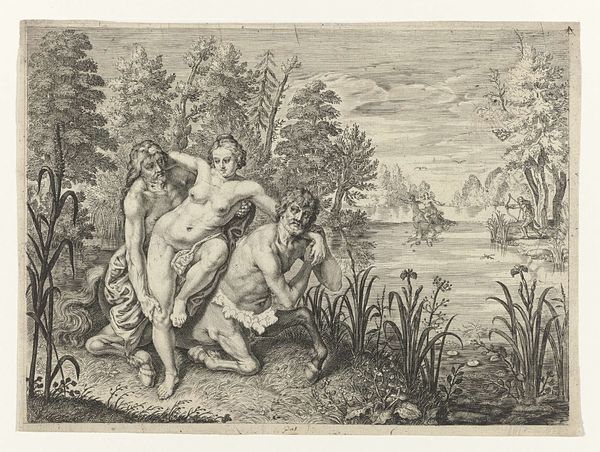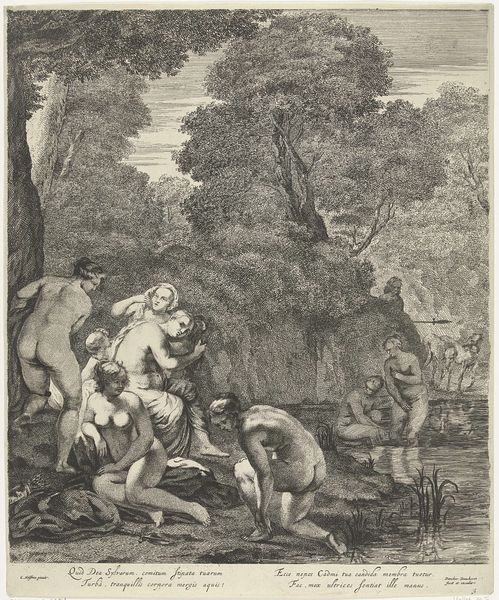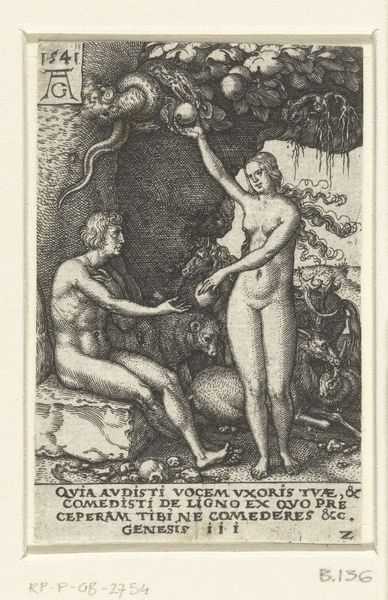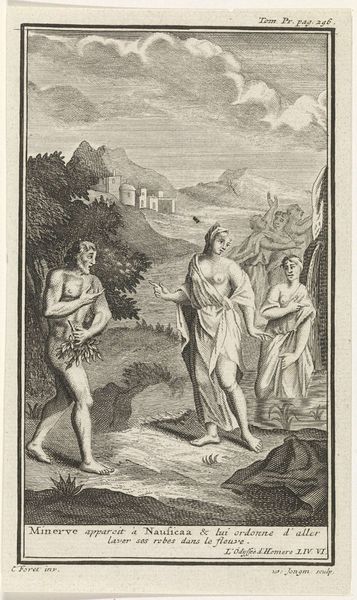
print, engraving
#
allegory
#
baroque
# print
#
old engraving style
#
traditional media
#
landscape
#
figuration
#
history-painting
#
nude
#
engraving
Dimensions: height 358 mm, width 218 mm
Copyright: Rijks Museum: Open Domain
Editor: This is Andries van Buysen's engraving, "The Temptation of Adam and Eve in Paradise," from around 1711, housed in the Rijksmuseum. What strikes me is how Baroque it is – full of dramatic foliage and rather sensual figures – despite depicting such a pivotal, morally charged moment. How do you interpret this work? Curator: For me, it’s about reading the iconography. The piece vibrates with established symbolic meanings. Look at the animals - why are they included? Is it merely decorative? The peacock was often associated with pride and vanity. How might that relate to the moment being depicted? Editor: So, the animals aren’t just there, they carry a deeper significance related to the fall from grace? Curator: Precisely. The serpent, of course, is the classic symbol of temptation. But consider the birds in flight, leading the eye upwards: a flock usually represents potential or possibility, but their specific presence *here* is really fascinating, considering they occupy the space above Adam and Eve’s paradise. What meanings could the artist have wanted to add through this avian imagery? Editor: Maybe they symbolize the loss of innocence, escaping upwards and away from Eden after the act? Or are they just visual devices directing our sight upwards? Curator: That's possible, and artists frequently layered symbolism, so something can perform multiple duties! The positioning and number of birds – that demands unpacking. Artists like van Buysen spoke to their audiences through commonly understood, though multivalent, visual language. The point is the painting provides so much meaning based on what symbols register to us and how they register. Editor: This is really eye-opening. I hadn't considered the animals and the birds as actively contributing to the narrative's cultural symbolism. Curator: Paying attention to repeated visual motifs illuminates much. That's what makes studying art so enriching, revealing how symbols function and continue across centuries!
Comments
No comments
Be the first to comment and join the conversation on the ultimate creative platform.
